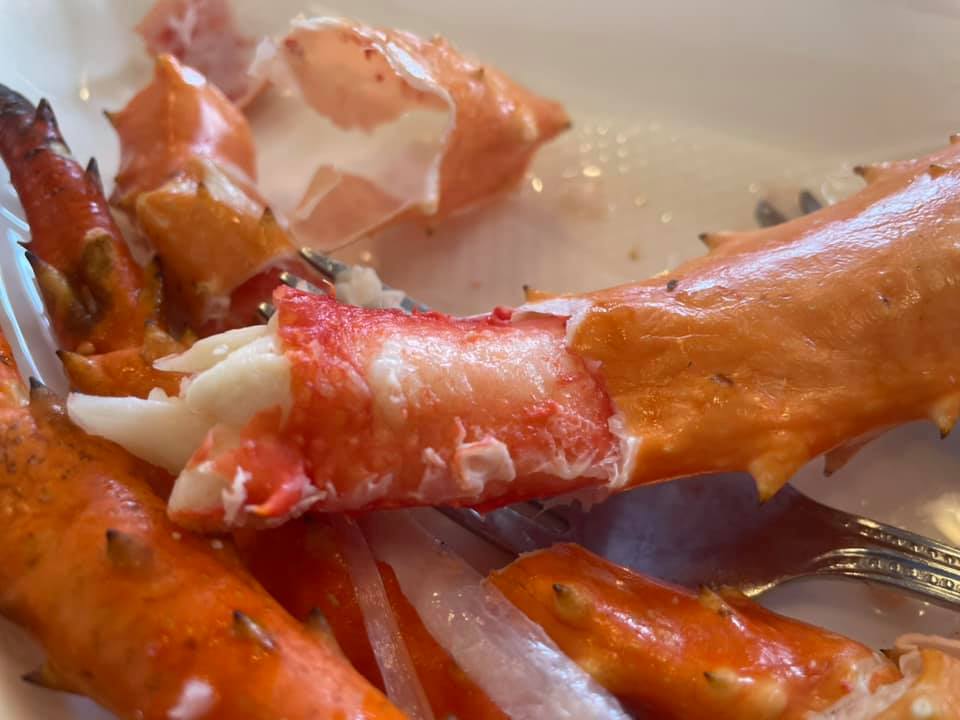Alaskan Fisheries: Sustaining Abundance While Tantalizing the Palate

Alaskan fisheries produce about half the fish caught in the U.S. and they’re often ranked among the best-managed and most sustainable on the planet. The fisheries are managed for sustainability while keeping the long-term health of the stocks a top priority ever since statehood in 1959, mandated by the state’s Constitution.
Seafood species have managed to remain abundant as part of the healthy, intact ecosystems in Alaska. The Arctic Oceans, North Pacific, eastern Bering Sea, and the Gulf of Alaska waters that surround the state support some of the world’s most productive and valuable fisheries. This is critical as sustainable seafood is the world’s most environmentally efficient source of protein, well-managed when there is a system of environmentally responsible practices.

Sockeye salmon fresh from Alaskan waters
(Wikimedia commons)
Prized across the globe, Alaskan fish and seafood have long been renowned for their superior flavor, thanks to a natural diet of marine organisms. For example, salmon consume krill and tiny crustaceans that make them so flavorful, while their firm texture comes from migrating thousands of miles in cold water.
Juneau, Alaska is no exception which is why so many visitors to the city say the cuisine is one of the highlights of their trip. The Alaskan capital is a foodie paradise with everything from casual grab-and-go spots to fine dining eateries featuring fresh-caught fish and seafood. Talented chefs like Chef Lionel, born and raised in Juneau as the third generation of chefs in his family, are always striving to showcase local fresh and sustainable seafood.

Chef Lionel Uddipa, Salt restaurant, Juneau
There’s plenty of Alaskan king crab on the menu at famous spots like Tracy’s but menus include unique dishes too. Perhaps a boneless salmon fillet with crab meat and cream cheese in a puff pastry with a side of wild berry chutney.
Juneau (and the entire state) is famous for its wild salmon and king crab, but it also offers oysters, clams, cod, scallops, rockfish, halibut, and more. In fact, the waters around Juneau are particularly renowned for excellent halibut fishing, with halibut returning to the coastal waters from mid-June to mid-September.

Alaskan King Crab at Tracy’s King Crab Shack, Juneau, Alaska photo credit: K.C. Dermody
Sustainable Practices
As one of the most precious resources in Alaska, seafood sustainability tells the story of the important work the state does to ensure sustainable fish and seafood land on your plate. The state’s fisheries use a variety of methods to ensure fresh seafood.
Families & Community
The heart and soul of the Alaska seafood industry are the fishing families, whose practices have been handed down throughout generations, with a passionate belief in the importance of sustainability. This means that many of those fishing today are fishing the same seas their parents, grandparents, and even great-grandparents did. They want their own children to have the same fishing opportunities that there are now with the knowledge that sustainable fishing practices help to ensure Alaskan waters will be full of many diverse species of fish for decades to come.
There is a comprehensive suite of regulations and laws aimed to ensure a fair and safe working environment for all, including Alaska’s fishing families, which creates an important foundation for a culture of social responsibility.
Prioritizing Stability While Preventing Overfishing
The stability of marine ecosystems is a priority. Overfishing can be devastating to our oceans and marine life by preventing species from being able to repopulate adequately. When entire species are fished to critical endangerment or extinction, not only does that create a food gap, but their predators have fewer options for food and their prey can become overabundant.
Annual surveys are used to determine the total fish population and then a limit is set on the number that can be caught. The approach considers both environmental conditions and the ecosystem in supporting the sustainable wild populations.
In addition to catch quotas, stock assessments monitor and evaluate fish populations regularly. There are also fishing gear restrictions such as limiting the use of trawls to Alaska residents and requiring permits.
Wild-Caught
Most types of aquaculture, including finfish farming, are prohibited in Alaska which means the majority of the fish here are wild-caught. That prevents the risk of farmed fish escaping and ultimately harming the wild populations while also keeping supply and demand in balance.

Catching Your Own Fish & Seafood, Sustainably Of Course
One of the best experiences you can enjoy in Juneau is fishing, so why not catch your own? Alaska Luxury Tours offers Super Yacht service and fishing charters throughout the summer season on the “Luff Boat,” a 60′ Riviera Yacht for a truly luxurious experience. Plus, Mercedes Sprinter Limos are available for airport transfers and chauffeur services.

A private chef can even be included to whip up some of Alaska’s most delicious dishes like Seared Wild Alaskan King Salmon, Seared Wild Alaskan Halibut, and Fresh Shucked Tanner Crab.
Alaska Luxury Tours is permitted to guide and conduct fishing charters in accordance with the USFS and Alaska Department of Fish and Game. To discuss your needs or learn more, give us a call, shoot us an email, or use our contact form here.
